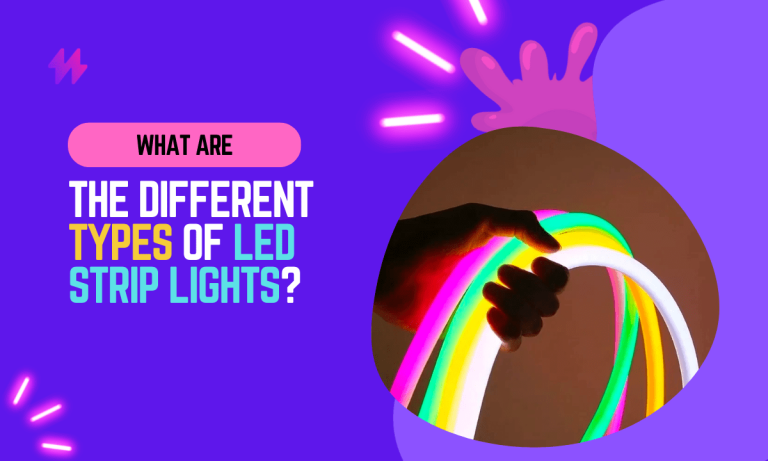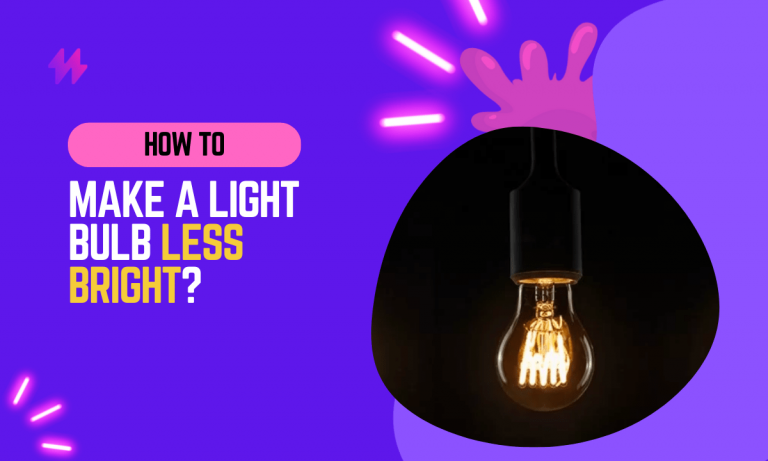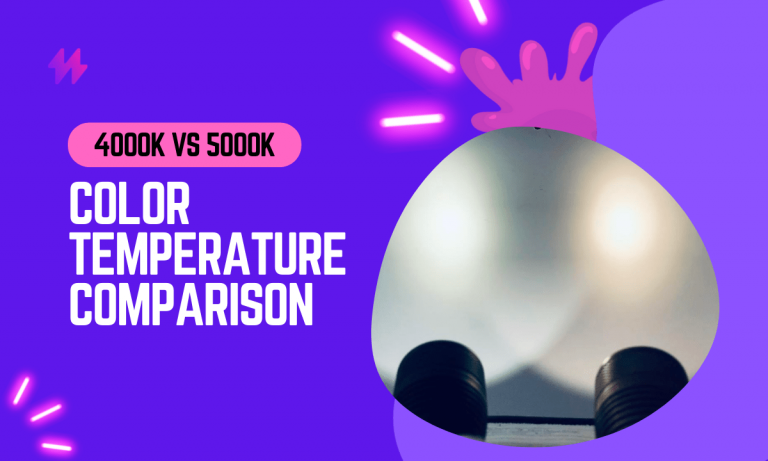RGB vs RGBIC – What’s The Difference?
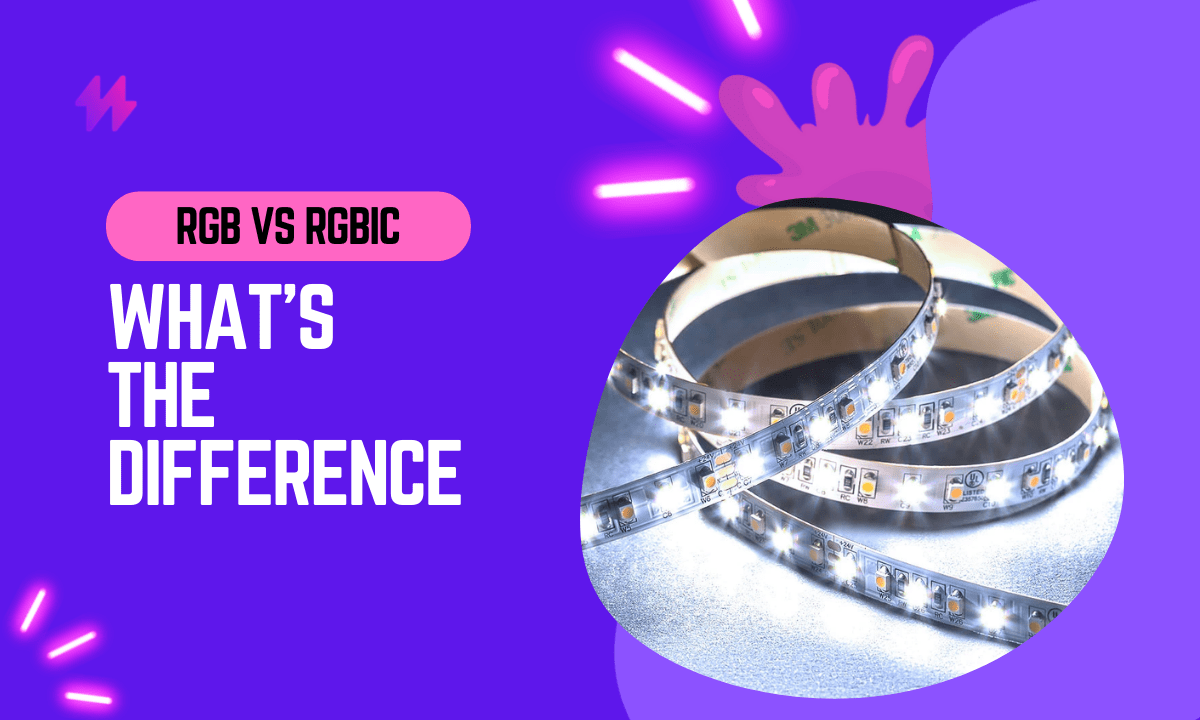
LED light strips are becoming more and more popular because they offer a lot of advantages over traditional light bulbs. One of the most popular types of LED light strips is RGB (red, green, blue) strips, while RGBIC (red, green, blue, white, amber) strips are a newer type of LED light strip that offers even more benefits. So, what’s the difference between RGB and RGBIC?
In this article, we will compare RGB and RGBIC led strip lights and share the difference between both.
RGBIC LED light strips are becoming more and more popular because they offer a lot of advantages over traditional light bulbs.
LED light strips have revolutionized home and commercial lighting, providing customizable options to fit various spaces. The RGBIC lights, which utilize advanced technology allowing for better color mixing and control, are gaining traction for offering even more vibrant RGB color variations compared to traditional RGB strips. In a market flooded with RGB lights, understanding the RGB vs RGBIC – what’s the difference? is essential for making an informed choice.
Understanding RGB LED Light: rgb vs rgbic – what’s the difference
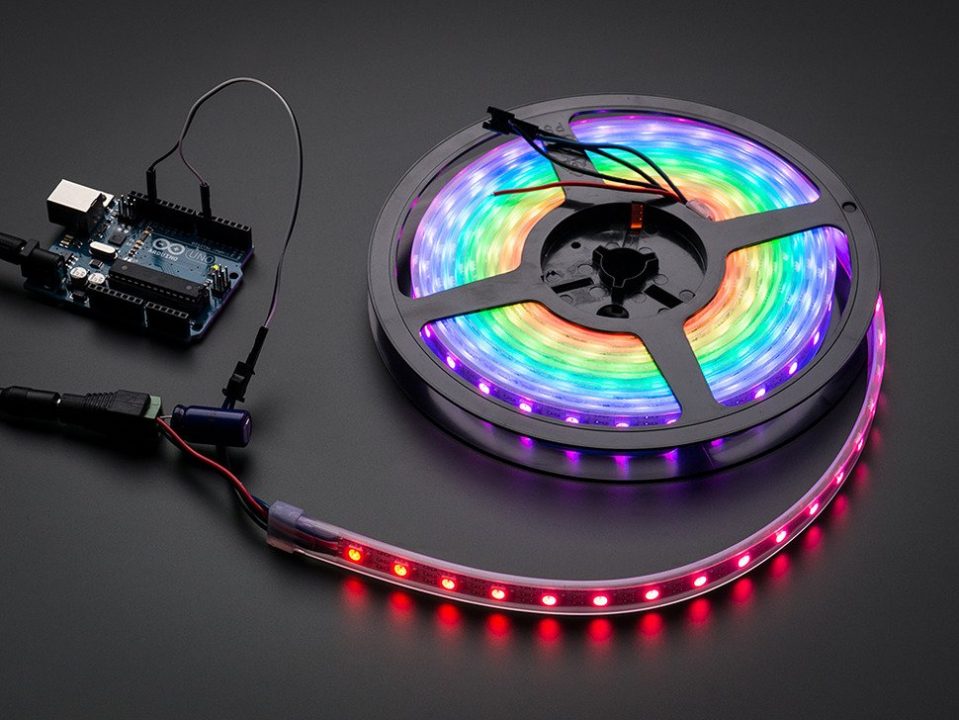
An RGB LED is a combination of three LEDs that produce 16 million colors. RGB LED light bulbs to offer a wide range of colors and can be used to create different lighting effects.
RGBIC lights represent a significant innovation in the realm of rgb lighting due to their built-in intelligent control chips, which allow for enhanced color mixing and individualized color control. Understanding the RGB vs RGBIC – what’s the difference can help consumers choose the right RGB solution for their needs, especially when considering options like addressable RGB LEDs and the advantages of rgbw strips for creating dynamic lighting effects.
Understanding RGBIC LED Light: Exploring RGBIC Meaning, RGB Stand, RGBW, and RGBCW
RGBIC, on the other hand, is a new type of LED light strip that offers even more benefits. RGBIC led strips are made up of five different color LEDs: red, green, blue, white, and amber. This allows for an even wider range of colors and lighting effects.
RGBIC lighting technology also supports advanced features such as color changing and digital RGB control, making it suitable for creating unique ambiance in various settings. With Govee RGBIC options available, users can truly enhance their spaces using this innovative type of LED strip, understanding RGB vs RGBIC – what’s the difference to maximize their lighting experience.
Understanding the Difference Between RGB and RGBIC LED Light Types
So, what’s the difference between RGB and RGBIC? Here are some key differences:
- RGB led strips can produce 16 million colors, while RGBIC led strips can produce over 1 billion colors.
- RGBIC led strips offer more flexibility when it comes to creating different lighting effects.
- RGBIC led strips use less power than RGB led strips.
- RGBIC led strips are more expensive than RGB led strips.
So, there you have it! These are some of the key differences between RGB and RGBIC LED light strips.
Understanding the differences between RGB and RGBIC is key for anyone looking to upgrade their lighting solutions. By exploring the various RGB options, such as RGBW and RGBWW, users can find the best match for their needs and preferences with these innovative lighting technologies.
RGBIC Strip Lights: A Comprehensive Guide to Understanding and Choosing the Right LED Options
- Multiple IC chip control
- Can display multiple colors at one time
- Used to create more lighting effects
- Cannot be cut
- Ultra bright
Exploring RGB Strip Lights: A Deep Dive into Vibrant LED Technologies
- No (IC) independent chip control
- Displays one single RGB or white color at a time
- Can be cut to size at copper markings
- General standard brightness
Also read: What’s the Difference between Daylight and Soft white Light
Upgrading to RGBIC lighting opens up a world of possibilities for vibrant color mixing and creative designs within a space. This advanced technology, recognized as RGBIC meaning, refers to its built-in intelligent control chips, which set it apart from traditional RGB options and enhance user experience.
RGB vs RGBIC: When Should You Decide?
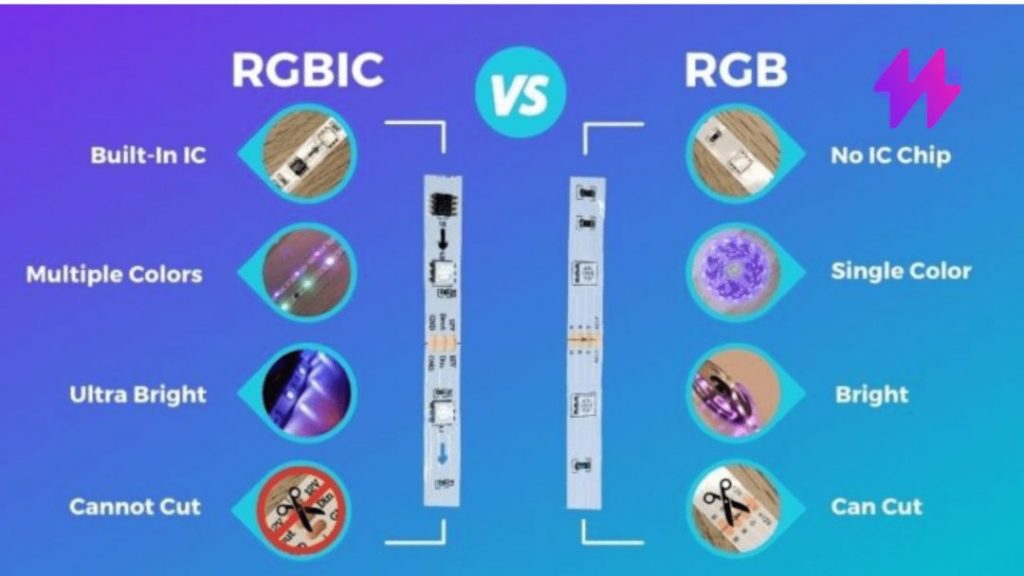
If you’re looking for a wider range of colors and more flexibility when it comes to creating different lighting effects, then RGBIC is the way to go. However, keep in mind that RGBIC led strips are more expensive than RGB led strips.
On the other hand, if you’re on a budget and are looking for a basic LED light strip, then RGB is a good option. Though RGB led strips don’t offer as many color options or lighting effects as RGBIC led strips but can be used.
Choosing the right LED strip can greatly influence the ambiance of your space. For those seeking advanced features and vibrant color mixing, exploring options like rgbic lights, which have an additional intelligent control chip, will prove beneficial, as they stand out in the conversation of “rgb vs rgbic – what’s the difference.
RGBIC LED Lighting: Perfect for Behind TV Setup
RGBIC LED light strip is perfect for behind television because it offers a wide range of colors and can be used to create different lighting effects. RGBIC LED lights are also more energy-efficient than RGB LED lights, so you’ll save money on your electricity bill in the long run.
If you’re looking for a way to add some extra flair to your home theater setup, then RGBIC LED light strips are a great option!
The RGBIC LED light strip not only provides vibrant RGB colors but also features addressable capabilities that enhance creative applications in any environment. By utilizing RGBW options, users can create stunning light scenes that complement their home décor and elevate their viewing experience.
Music Playlist Sync Capabilities: Enhancing Your RGB LED Lighting Experience
Not only RGBIC LED light have a wide range of colors but also it can be used to create different lighting effects. One of the great features of RGBIC LED lights is that they can be synchronized with music. This means that the lights will pulsate and change color in time with the music, providing a fun and engaging experience for everyone in the room.
Whether you’re watching a movie or listening to music, RGBIC LED light strips are a great way to add some extra excitement to your experience.
RGBIC LED light strips are not only capable of creating dynamic lighting effects, but they also utilize advanced technology for seamless synchronization with music. The exciting feature that RGBIC refers to its built-in independent chips sets it apart from conventional RGB options, highlighting the rgb vs rgbic – what’s the difference that consumers should understand.
Can You Cut an RGBIC Light Strip? | Installation Insights
No, you can’t cut an RGBIC light strip. RGBIC light strips have multiple IC chips that control the LED lights. These chips allow the strip to display multiple colors at one time and create more lighting effects. If you cut the strip, you will damage the chips and ruin the strip.
It’s important to highlight that RGBIC lights, which have a built-in independent chip, offer superior functionality compared to standard RGB strips. While common RGB designs typically allow for single color displays, RGBIC’s advanced technology enables vibrant rgb color mixing that can enhance the overall atmosphere in any setting.
How to Properly Install Your RGBIC LED Light Strip: A Step-by-Step Guide
Installing RGBIC LED light strips is easy and can be done in a few simple steps.
Installing RGBIC LED light strips can significantly enhance the ambiance of any room due to their vibrant color capabilities. Understanding the concepts of rgb vs rgbic – what’s the difference will help users appreciate how rgbic lights, with their built-in independent chip, outperform common rgb strips in functionality and creativity.
- Choose where you want to install the RGBIC light strip.
- Clean the surface where you will be installing the strip.
- Peel off the adhesive backing on the RGBIC light strip.
- Stick the RGBIC light strip to the surface.
- Connect the RGBIC light strip to a power source.
- Use the remote control to change the colors and effects of the RGBIC light strip.
RGB vs RGBIC LED Light Strip: Which Option is Superior?
Now that we’ve gone over some of the key differences between RGB and RGBIC led strips, it’s time to answer the question: which is better?
There are a few things to consider when making your decision. The first is price. RGBIC led strips are more expensive than RGB led strips. If you’re on a budget, then RGB led strips are a good option. However, if you’re willing to spend a bit more money, then RGBIC led strips offer a wider range of colors and more lighting effects.
Another thing to consider is power consumption. RGBIC led strips use less power than RGB led strips, so you’ll save money on your electricity bill in the long run.
Finally, it’s important to think about the look you’re going for. If you want a wide range of colors and the ability to create different lighting effects, then RGBIC is the way to go. On the other hand, if you’re looking for a basic LED light strip, then RGB is a good option.
When considering the various options for LED lighting, understanding the distinctions between RGB and RGBIC becomes crucial in making an informed decision. While RGB strips are a cost-effective choice for basic lighting, the advanced capabilities of RGBIC—equipped with an additional intelligent control chip—permit a creative array of lighting effects that elevate any space.
Conclusion: Final Thoughts on RGB vs RGBIC LED Lights
In conclusion, understanding the distinction between RGB and RGBIC lighting technologies is essential for anyone looking to enhance their space with vibrant, customizable lighting solutions. RGB, which stands for Red, Green, and Blue, refers to the type of LED that can emit any color by combining these three hues at varying intensities. This technology allows for a wide range of color options, making it a popular choice for both ambient lighting and entertainment setups. However, RGB LEDs are limited to displaying one color at a time across the entire strip, which may not be sufficient for more dynamic or layered lighting effects.
On the other hand, RGBIC, an advanced version of RGB, includes ‘IC’ (Independent Control), which means that each LED on the strip can be controlled independently. This technology allows for the creation of more complex lighting effects, such as gradients, multicolor chase effects, and even animations along the strips, providing a more immersive and customizable lighting experience. The ability to control individual segments of the strip independently significantly expands the creative possibilities, making RGBIC particularly appealing for those looking to create engaging, thematic, or mood-specific lighting scenarios in their environments. Ultimately, the choice between RGB and RGBIC will depend on the specific needs of the project, including desired visual effects, budget, and installation considerations. While RGB provides simplicity and uniformity, RGBIC offers unparalleled control and creativity, catering to sophisticated lighting designs that require detailed and varied color patterns.
RGB Vs RGBIC – What’s The Difference | Features of RGB LED Lighting
Understanding RGB vs RGBIC – What’s The Difference highlights key differences between standard RGB lights and the advanced RGBIC lighting system. RGB allows for basic color mixing through its three primary color chips, while RGBIC incorporates an addressable RGB controller, enabling dynamic color effects and independent control of each LED segment. This unique color control mechanism allows RGBIC lights to produce complex lighting patterns that standard RGB lights simply cannot achieve. The RGBIC technology, including variations like RGBW and RGB+CCT, offers more versatility in color temperature, such as warm white and cool white, making it suitable for a variety of applications. Thus, while both systems are used to create vibrant lighting effects, RGBIC lights stand out with their intelligent IC-controlled capabilities, providing enhanced flexibility for creative and immersive lighting solutions.
RGB vs RGBIC – What’s The Difference | Color Mixing Techniques
RGB lighting and RGBIC lighting utilize different color mixing techniques that significantly affect how users experience and control their environments. RGB lighting primarily combines red, green, and blue light chips to create various colors, while RGBIC lighting features a built-in independent chip that allows for addressable RGB control. This means RGBIC can produce more intricate lighting effects and patterns. The addition of intelligent control in RGBIC enhances the mixing process, enabling effects like RGBW, RGB + Cool White, and RGB + Warm White. Users can enjoy the flexibility of RGBIC lights to create diverse atmospheres while understanding RGB vs RGBIC – What’s The Difference in color representation.
Color mixing further differentiates RGB and RGBIC systems. RGBCCT lights, for example, merge RGB with color temperature control, offering options such as RGBWW (which combines RGB with warm white) or RGBCW (cool white). The RGBCCT system provides a 3-in-1 approach, allowing for more nuanced lighting adjustments. Meanwhile, RGBIC setups can also integrate advanced features like addressable RGBW, which allows each LED to be controlled separately. Such capabilities enable users to create whole room RGB environments, while RGBIC lights strip the limitations often found in traditional RGB setups. Understanding the main differences in these color mixing techniques is vital for selecting the right lighting system for your needs.
Brightness and Luminosity
Brightness and luminosity are crucial aspects that distinguish RGB and RGBIC lighting. RGBIC lights feature addressable RGB technology, allowing for more precise control over individual LEDs. This means that while traditional RGB lights operate under a single control method, RGBIC lights provide a richer experience through their built-in independent chips. The integration of various color combinations such as rgbw=rgb and rgbcct=4-in-1 rgbw contributes to a more vibrant display. The flexibility of configurations like rgbww=rgb+white+warm allows users to achieve desired effects, resulting in significant differences in overall brightness and visual impact.
In the realm of smart lighting solutions, the contrast between RGB and RGBIC technology is noteworthy. RGBIC lights, powered by intelligent control mechanisms, can adapt their brightness dynamically. This adaptability includes options like rgbw lights, rgbcw=rgb+cool, and rgb+nw, which enhance the luminosity experience. Users can experience effects that traditional rgb stand setups cannot replicate, demonstrating a big difference in performance for applications such as mood lighting, immersive environments, or simple home decor. The presence of features like rgbic controller and addressable rgb+cct further showcases the advancements in light control and manipulation within the RGBIC spectrum.
Features of RGBIC LED Lighting
RGBIC lighting technology introduces a new level of sophistication in the realm of colorful lighting. The RGB vs RGBIC – What’s The Difference becomes clear as RGBIC incorporates an additional intelligent control chip compared to traditional RGB lights. This enhancement allows for unique color control mechanisms, such as addressable RGB CCT, enabling users to experience an array of lighting options that includes RGBWW, RGBW, and RGB+CCT combinations. With smart RGB lights, users can achieve effects and lighting patterns that are more dynamic than single RGB or basic RGB strip lights. For example, RGBIC strip lights support IC-controlled RGB configuration, providing a vibrant, customizable experience with colors like R+B+G+W and RGB+CW+WW. While RGBIC strip lights shine with impressive intelligence, they may be less flexible for extended ultra-lengthy use compared to traditional options. This blend of advanced technology ultimately positions RGBIC as a superior choice for those seeking versatility in their lighting solutions.
Unique Color Control Mechanism
RGBIC lights feature an advanced color control mechanism that distinguishes them from standard RGB lights. This unique system utilizes a built-in independent chip that allows for individually addressable pixels, enabling more intricate color mixing techniques. For instance, RGBIC chips can produce various configurations like RGBWW, which includes both warm white and RGB colors, or RGB+CCT, which can blend both color and color temperature in one. This level of customization enhances the visual experience, making RGBIC a higher caliber option compared to traditional RGB.
The technological innovation behind RGBIC lighting also opens up the realm for dynamic lighting patterns and effects. Unlike standard RGB, which may offer limited color combinations, RGBIC allows for complex displays such as the RGBCCT 5-in-1 setup, integrating multiple lighting options. IC-controlled RGB lights can create vivid displays with less flexibility for ultra-lengthy use, yet they compensate with vibrant color outputs. The SK6812 chipset, often utilized in RGBIC setups, ensures that these colorful RGB strip lights deliver a brilliant spectrum of hues and patterns unmatched by simpler RGB lights.
Effects and Lighting Patterns
RGBIC lights offer a diverse range of effects and lighting patterns that enhance their visual appeal. Unlike standard RGB lights, RGBIC, which incorporates a built-in independent chip, provides intricate addressable options, allowing for more dynamic sequences and colors. The flexibility of RGBIC lights means they can deliver multiple colors simultaneously across segments of the strip, transforming spaces with mesmerizing displays. These lights shine in applications requiring complex lighting setups, making them a superior choice for decorative purposes compared to traditional RGB.
The variety of effects available with RGBIC lighting includes stunning gradients, color fades, and dynamic patterns that can be synchronized with music or events. RGBCCT options, like 3-in-1 RGB and RGBWW meaning, enhance this capability further, providing comprehensive color control. This broader spectrum may include combinations such as RGB+WW, RGBW=4, and RGBWW=RGBCW, all of which expand the lighting possibilities. Top RGB lights can create breathtaking visuals through their adjustable luminosity and dimming features, giving users the ability to customize their environment easily.


